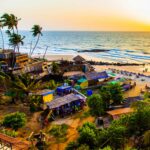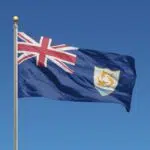Goa Liberation Day, observed every year on December 19 in India, is regarded as one of the most significant days in the history of Goa. Located at around 250 miles south of Mumbai, Goa is one of India’s smallest states and was previously under Portuguese possession for about 450 years. The Goa Liberation Day is a celebration of the day Indian armed forces freed Goa from Portuguese rule on December 19, 1961. The day is also particularly important for recognizing the achievements Goa has made in recent years, accomplishing milestones in the tourism sector and maintaining its position as having the highest per capita income among all the states and union territories of India.
History of Goa Liberation Day
Goa Liberation Day is all about celebrating the independence of Goa from the Portuguese. Goa is a state on the south-western coast of India within the region known as the Konkan. It is bordered by the states of Maharashtra to the north and Karnataka to the east and south, as well as the Arabian Sea to the west. Its capital is Panaji, which lies on the north-central coast of the mainland district. After being freed from Portuguese possession, it became a part of India in 1962 and was officially recognized as an independent nation in 1987.
On August 15, 1947, when India gained its independence, Goa was still crumbling under 450 years of Portuguese rule. The Portuguese were among the first to colonize parts of India and refused to give up their hold over Goa and other Indian territories, even in the wake of India’s independence.
Following a myriad of unsuccessful negotiations and diplomatic efforts with the Portuguese, the former prime minister of India, Jawaharlal Nehru, decided that military intervention was their only option. The 36-hour military operation, conducted from December 18, 1961, was code-named ‘Operation Vijay’ meaning ‘Operation Victory,’ and involved attacks by the Indian navy, air force, and army.
During the historic moment, Indian troops reclaimed the Goan territory with little resistance, and General Manuel António Vassalo e Silva signed the certificate of surrender. 451 years of Portuguese rule in the region officially came to an end and the territory was taken back by India on December 19, 1961. However, the action incited mixed responses internationally at the time. Though many praised the move and backed India, others, including Portugal, criticized the Indian forces’ “invasion” of Goa.
Now, Goa Liberation Day is marked by an abundance of events and festivities in Goa. A torchlight procession is ignited from three different locations in the state, eventually all meeting at the Azad Maidan. This is where a tribute is made to those who lost their lives in the takeover of Goa. Various cultural programs like Sugam Sangeet — an Indian musical genre with poetry in the Kannada language — are also held to honor the occasion.
Goa Liberation Day timeline
Despite present-day Goa being India’s smallest state by area, Goa’s history is long and diverse — Usgalimal rock engravings exhibit some of the earliest traces of human settlement in India, and the Mauryan and Satavahana Empires rule modern-day Goa during the Iron Age.
The Portuguese invade Goa when the governor of Portuguese India, Afonso de Albuquerque, captures the city, even though Goa is not among the cities Albuquerque was ordered to take over.
India becomes an independent nation after British colonial rule for almost 200 years — despite this, the Portuguese refuse to give up Goa.
Indian troops reclaim the Goan territory, officially ending 451 years of Portuguese rule in the region.
Goa Liberation Day FAQs
Why is Goa Liberation Day celebrated?
Regarded as one of the most significant days in the history of Goa, also considered as a forgotten war of freedom, December 19 commemorates the freeing of Goa from Portuguese rule by the Indian Armed Forces and the complete independence of the Indian subcontinent.
What is the old name of Goa?
The origin of the city name Goa is unclear. In ancient literature, Goa was known by many names, such as Gomanchala, Gopakapattana, Gopakapattam, Gopakapuri, Govapuri, Govem, and Gomantak. Other historical names for Goa are Sindapur, Sandabur, and Mahassapatam.
Do Portuguese still live in Goa?
The Portuguese controlled Goa until 1961 when India took over. Only a very small fraction of Goans speak Portuguese nowadays. Although an essential religious language, 1,500 students were learning Portuguese in Goa in 2015, totaling around 10,000–12,000 Portuguese speakers in the state.
How To Celebrate Goa Liberation Day
Attend a torchlight procession
If you are from Goa or India, or just generally love anything about Goa, consider attending the annual torchlight processions that take place on Goa Liberation Day. The day is celebrated with joy and enthusiasm, and is kicked off with these processions. The three separate parades following the torchlights, lit from three different locations, are so spectacular you’d wish you could witness all of them at once. All the torchlight processions and parades culminate at the Azad Maidan, where respects are paid to the martyrs who fought in the struggle for independence.
Listen to the Sugam Sangeet
The Sugam Sangreet is one of the cultural programs held on Goa Liberation Day. This is a form of classical vocal music that incorporates words with a different rhythm or style. This Indian musical genre is a poetic expression and a wonderful part of liberation celebrations for the Goan people. Be sure to listen online and enjoy it!
Read up on the history of Goa
Goa has a rich and diverse history, dating back to prehistoric times. Amazingly, prehistoric engravings at Usgalimal were discovered in the early 1990s and studied by the Institute of Oceanography in Goa. There is even evidence of a prehistoric Goan shamanic practice. After various dynasties ruled Goa, the era of Portuguese autocratic rule began in 1510 after Vasco da Gama’s fleet landed in Calicut, with Goa becoming the center of Portuguese control in India. Portuguese influence can still be seen in the Goan culture of today.
5 Interesting Facts About Goa
A forested land
Goa not only consists of long, sandy beaches — around 20% of the land falls within the beautiful Western Ghats of India, a vast mountain range and a treasure trove of biodiversity.
Goa celebrates two independence days
India became an independent country, free from British rule, in 1947 — Goa celebrates this as well as their state independence from the Portuguese in 1961.
Over 400 species of birds
There are six conservation areas where visitors can explore wildlife, which contain rare birds including the long-billed vulture, darter, great pied hornbill, and many more.
Beautiful waterfalls
Goa boasts one of India’s largest waterfalls, the Dudhsagar Falls, which is 1017 feet high and can be found on the far-east side of the state.
Ancient rocks
Some of the oldest rocks in India can be found in Goa between Molem and Anmod — classified as the Trondjemeitic Gneiss, these rocks are over 3,600 million years old!
Why We Love Goa Liberation Day
It’s a paradise in India
There is so much more to Goa than beaches and parties! It is a famous honeymoon and holiday destination, with boundless greenery, alluring old landmarks, and endless oceans. Goa, in many ways, is the paradise of India. It’s important that such a place celebrates its independence and culture.
Goa boasts a rich history
We’ve said it many times, but it’s true. Celebrating Goa Liberation Day means to celebrate Goa and its fascinating history that makes the state what it is today. It has been ruled by many dynasties, not just by the Portuguese. You can trace this if you are ever lucky enough to visit. The state was under the rule of the Kadambas for 300 years and it has various monuments that were built in that era, the most famous among them Tambdi Surla.
Only Goa allows a two-wheel taxi!
Goa is in many ways different from the rest of India, with its own culture and rules. One of these is that it is the only state in India that allows a two-wheeler taxi. All you have to do is pay the biker, aka “pilot”, and ask him to drop you at your desired location. Isn't this motorcycle taxi a great idea for cost-effective traveling?
Goa Liberation Day dates
| Year | Date | Day |
|---|---|---|
| 2025 | December 19 | Friday |
| 2026 | December 19 | Saturday |
| 2027 | December 19 | Sunday |
| 2028 | December 19 | Tuesday |
| 2029 | December 19 | Wednesday |









